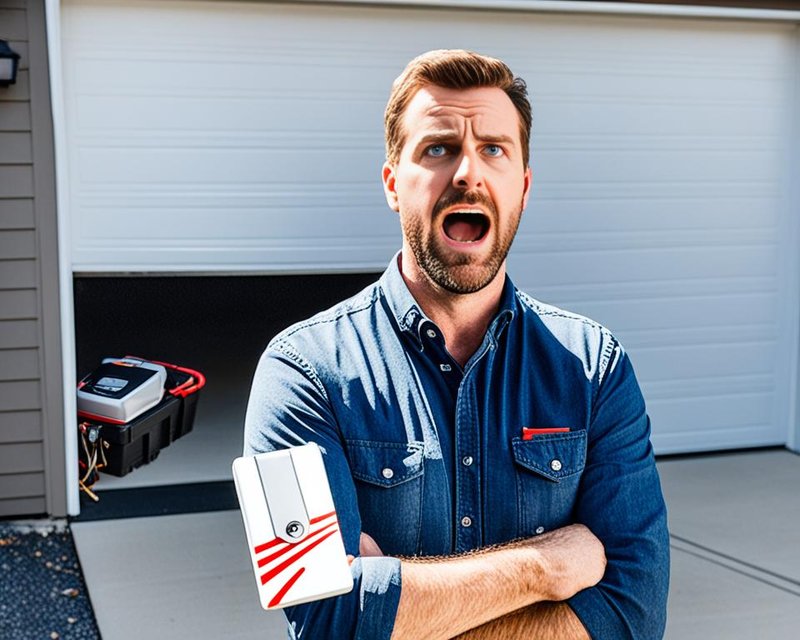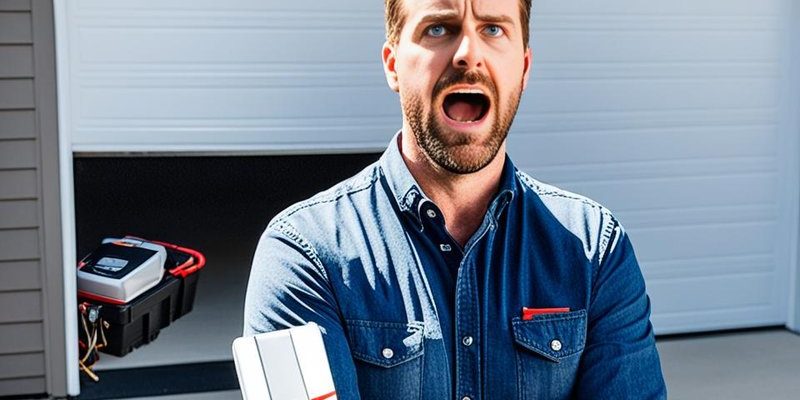
Let’s set the scene: you’ve got a Linear brand garage door opener, which is one of those common, sturdy names people trust for everyday security. The remote is your gatekeeper—press a button, and your garage door obeys. But what happens under the hood when you reset it often? Is it just a harmless little ritual, or could you be making things worse in the long run? Let’s take a careful, beginner-friendly look at what’s really involved.
Understanding How a Linear Garage Remote Works
Before worrying about the risks of frequent resets, it helps to know what’s happening inside these handy gadgets. A Linear garage remote is a small wireless transmitter. Basically, it’s like a walkie-talkie with just one job: sending a secret “open sesame” code to your garage door opener. When you press the button, it broadcasts a signal with a unique digital code.
The opener itself listens for this code. If the code matches what it’s expecting, the motor kicks in and moves your garage door. If not, nothing happens. This digital dance relies on what’s called a “sync,” or pairing—both devices agree on what signal means “open” or “close.” When you reset the remote, you’re usually erasing that handshake, so you can set up a new one.
Now, the Linear brand is well-known for using rolling codes. That means the code changes every time you press the button, making it much harder for someone to “clone” your remote. The reset wipes the stored pairing so you can start fresh—think of it like clearing out your phone’s Bluetooth connections and re-pairing with your headphones.
Why People Reset Their Linear Garage Remote
There are plenty of reasons someone might reach for the reset, and honestly, most of them are pretty valid. Sometimes the remote just isn’t working—maybe the battery died, or the code isn’t syncing with the opener anymore. Other times, you might’ve lost a remote or just want to make sure no one else has access. In these moments, the reset button feels like a quick fix.
Here’s the thing: resetting wipes out the stored codes and usually forces a new pairing. It’s like resetting your Wi-Fi router—turning everything off and on again just in case. It gives you that clean slate. And for situations like selling your house, moving, or upgrading your security, it’s downright necessary. No one wants a stray remote floating around out there with access to their garage.
But the urge to use a reset as a go-to troubleshooting step can creep in. When a remote seems finicky, it’s tempting to just keep resetting until it works. The question is, does this habit cause issues, or is it actually fine?
Is It Safe to Reset Linear Garage Remote Frequently?
You might be wondering if pressing reset too often will eventually wear out your Linear remote or opener, or maybe even mess up the security. Let me explain: in most regular home use, resetting a Linear garage remote is safe. The hardware is built to handle resets as part of its design—after all, people lose remotes, buy new cars, or just want to lock things down a bit tighter.
Here’s where you do need to be careful, though. The remote’s internal memory stores its syncing data—basically, the digital “handshake” that keeps your opener and remote talking. Frequent resets mean you’re constantly erasing and re-writing this memory. While it’s robust, it’s not totally indestructible. Flash memory (the part that remembers the pairing) has a finite lifespan—typically thousands of write cycles. For most people, that’s more than you’ll ever use in a lifetime, even with the odd troubleshooting binge.
What you *don’t* want is to lean on resets as your first move every time there’s a blip. Sometimes a misbehaving remote just needs a new battery or a fresh code sync—not a complete reset. Think of resets like rebooting your laptop—it won’t break anything if you do it now and then, but if you’re restarting every hour, something deeper might need fixing.
Common Problems That Lead to Frequent Resets
Let’s talk about what actually drives people to keep resetting their Linear remotes—maybe you recognize your own struggles here. The big culprits are usually syncing problems, battery issues, or unclear troubleshooting instructions.
- Syncing issues: If your remote keeps falling out of sync with the opener, resets seem like an easy fix. But sometimes the problem is really interference from other wireless gadgets nearby, or even just a weak signal if you’re pressing the button too far from the door.
- Battery problems: If replacing the battery leads to erratic behavior, it’s easy to think a reset is needed. But sometimes, all the remote needs is a fresh battery installed the right way—no extra code pairing required.
- Troubleshooting confusion: Many users don’t realize Linear remotes can be unpaired and re-paired without a total reset. The instructions can be vague, so people end up hitting the reset just to be safe.
Honestly, resets should be your last resort, after you’ve checked for other easy fixes. If you find yourself resetting every week, it’s probably time to call in a garage door professional or consider whether your opener or remote is nearing the end of its life.
What Actually Happens During a Linear Remote Reset?
You might visualize the reset button as a little “magic fix” switch, but what’s going on inside is more technical. When you reset a Linear garage remote, you’re clearing out the saved code or digital pairing it has with your garage door opener. After resetting, the remote is in “ready to pair” mode, just like when you first got it out of the box.
Here’s the step-by-step of what most resets involve:
- You press and hold the reset button—sometimes with a paperclip, since the button can be tiny and recessed.
- The light on your remote blinks or turns off, indicating memory wipe.
- All stored pairing codes are deleted. The remote is now blank and won’t work until you pair it again with the garage opener.
- To re-sync, you follow the same process as a first-time setup: put the opener in pairing mode, press the remote button, wait for confirmation, and test.
This whole process doesn’t delete or damage your remote. It just puts it back to factory condition. But each cycle of erasing and re-writing is a bit like erasing and reusing a whiteboard—eventually, even the best markers leave ghost marks.
Linear Garage Remote Durability and Reset Limitations
You might be worried that if you reset your Linear garage remote too often, you’ll wear it out or brick it. In reality, the durability of these remotes is quite high. Their flash memory is similar to what you find in USB drives or SD cards—engineered to handle plenty of write cycles.
Here’s the insight: unless you’re resetting your remote multiple times a day, you’re extremely unlikely to reach the end of its useful life. A typical Linear remote could handle thousands of resets. That’s more than enough for even the most mistake-prone household. Honestly, you’ll probably lose the remote or replace the garage door opener for some unrelated reason before the memory fails from overuse.
Still, resets should be rare, not routine. If your remote is needing constant resets just to work, there might be a bigger issue—faulty hardware, outdated software on the opener, or external interference. A garage door professional can help diagnose the real problem and save you frustration.
When You Should Consider a Universal Remote or Replacement
If you’re constantly running into issues, or if the reset just isn’t working anymore, it might be time to consider options like a universal garage remote. While Linear remotes are reliable, they’re not invincible. Sometimes models become obsolete, or the opener itself ages out of compatibility with newer remotes.
Universal remotes work with a wide range of opener brands, including Linear. The pairing process is usually simple, and you avoid brand-specific quirks. However, you’ll need to carefully follow the correct programming steps and check compatibility with your exact model.
If your remote is more than 8-10 years old, or if you need to reset it every month just to keep it working, replacing it is often the most stress-free move. Newer remotes offer better battery life, updated rolling code security, and clearer instructions for syncing or resetting.
Troubleshooting Tips Before You Reset a Linear Garage Remote
Before jumping straight to the reset, try these basic troubleshooting steps. You might save yourself some hassle and avoid unnecessary resets:
- Check the battery: Even new batteries can be defective. Make sure it’s installed correctly and contacts are clean.
- Move closer to the opener: Signal range can be limited. Try operating the remote within a few feet of the garage door opener to rule out interference or weak signal.
- Re-pair without resetting: Most Linear remotes allow you to simply re-sync the code without wiping the memory. Follow the pairing instructions in your user manual.
- Inspect for damage: Physical wear, moisture, or corrosion can all mess with a remote’s performance. Look for obvious signs of trouble.
The reset button is a helpful tool, but it’s not a “cure all.” Use it wisely, and you’ll avoid frustration and extend the life of your garage remote.
Closing Thoughts: Safe Habits for Linear Remote Owners
Resetting your Linear garage remote every now and then is safe and sometimes necessary—think of it as hitting the “refresh” button in just the right moments. But if you find yourself reaching for that reset too often, it’s probably a sign of another problem that needs attention. Check your batteries, re-sync the remote, and make sure you’re following the right troubleshooting steps before erasing everything. And remember: even the toughest remotes have a limit. If resets become routine, it might be time to look at a replacement or call in a pro. At the end of the day, a reliable garage door is about peace of mind. Take care of your remote, treat resets as an occasional fix, and your Linear system should serve you well for years to come.
